[Techie Tuesdays] Baishampayan Ghose — the Agartala boy who is all set to become a farmer after co-founding 3 startups
The boy from Agartala who came to Kolhapur 16 years ago is the main man behind Helpshift’s two billion-plus SDK installs. Baishampayan Ghose (BG) is a techie who has given utmost importance to learning, so much so that he dropped out and made his own syllabus when he found the college curriculum and environment insufficient for him. The star of our Techie Tuesdays for today, BG will soon also be a farmer.
You think dropping out of college is cool? I’ll tell you what’s cooler(and more sensible) — dropping out, building your own syllabus, finishing it, and joining college again. BG did all this back in 2003, and, having single-handedly written the entire air ticket booking engine of Cleartrip, started up despite failures, and built a system used by over two billion devices, has not just survived but thrived.
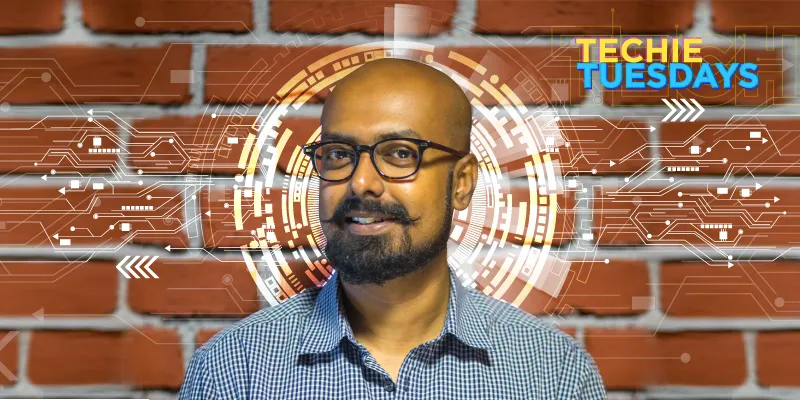
BG is unique in many aspects, whether it’s his choice of technology or building teams or attitude towards life. We explore them all as BG takes us through his journey in the Techie Tuesdays for this week:
The Agartala boy
Born in Agartala, Tripura, to a doctor father and government official mother, BG spent most of his childhood with his uncle, an electrical engineer who was considered one of the greatest of his time. BG loved his guru and mentor’s house, which was a sort of electronics and electrical lab.He would take an instrument and hide, coming back only after dismantling the whole thing. Growing up, he thought of himself as someone who was destined to be an engineer. BG didn’t have too many friends in school. Not that he was asocial, but he had a problem in hitting the same wavelength as most people. So, he ended up spending a lot of time alone and with books. Though he wasn’t exposed to computers early on, he had a good understanding of them courtesy of his vast reading.
BG was exposed to mainstream computing and websites in the 11th standard when the internet came to Agartala. Unable to secure the marks required for admission to good colleges, he sought to enrol himself in a computer science course so he could learn more about what he was truly interested in.Eventually, BG got admission in Shivaji University in Kolhapur and he travelled all the way from the Northeast to this part of the country for the first time.
Related read - This entrepreneur from Guwahati is taking IT to the interiors of Northeast India
Disappointed + disillusioned = dropout
In his first and second year at college, BG was taught the basic stuff with almost no computing. The thought that half of his education was over and the prospect of being forced to look for a job in two years scared him.He says,
I was disappointed and disillusioned because I came to my college with a lot of hopes and great aspirations that I'd learn great stuff there. But students weren't interested in learning much, teachers weren’t great either,and everyone was just running after jobs.
To escape from this track, BG decided to pause the whole process and take full control of his education. He dropped out of college and created his own syllabus, mostly designed from the MIT (Open Courseware) and Stanford Computer Science curriculum. BG believes knowledge is the power that can make all problems disappear, and it was this belief that gave him the confidence to continue down the path he’d chosen.
Also read - From Rs 20,000 to a Rs 100cr business: the journey of college dropout Jimmy Mistry
The two year of exile
The dropout phase, however, was not easy on BG. He recalls,
I faced rejections from society. I had to lie to my parents because I knew they would not accept the truth. I told them I’d passed (and told the truth only after two years). They were shocked and we didn’t communicate for a year. It was almost like I was in exile. It was tough but I had a lot of confidence in my own abilities, knowledge, and experience. That gave me a lot of support.
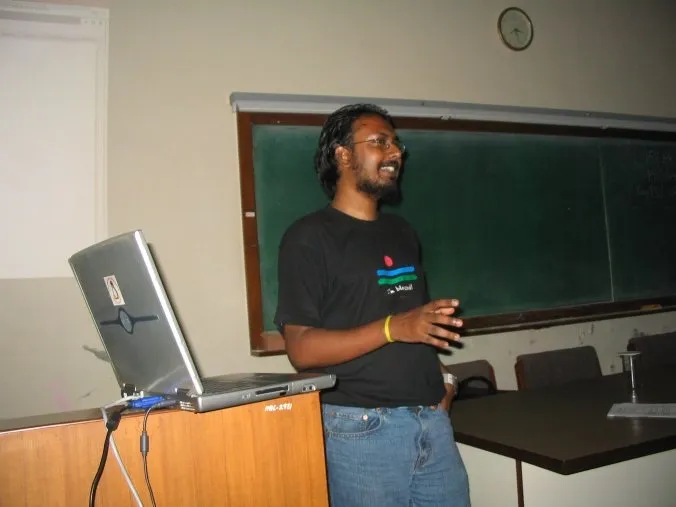
BG stopped taking money from his parents and considers himself lucky to have got into Google Summer of Code (GSOC) then, the stipend from which sustained him for a year. His priorities were set right then. His monthly expenditure was Rs 3,000, of which Rs 700 was for food, Rs 700 for rent, and Rs 1,500 for internet.
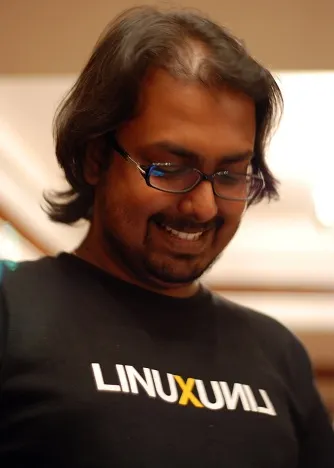
Over the next four years, BG got involved in many open-source software projects where he learnt about programming, project management, and people-related problems. He became an active part of the free and open-source software(FOSS) community, involved himself in many projects, and contributed to Ubuntu and Python. He says, “Even though I may not understand everything completely, I made sure I read a lot of complex code.”
BG was the founder of the Ubuntu India local community team, a group of Indian developers working on Ubuntu. He worked on projects, looked at bug reports and patches, and became an official Ubuntu developer and a Debian maintainer. He also contributed by creating packages or packaging software, solving bug reports, and working on the kernel module.
After two years BG realised that his self-study was over and that he was ready. He went back to the college and finished his course in the next two years. Eventually, he graduated with a first- class honours degree but wasn’t qualified for campus placement, which, in hindsight, he believes to be a great thing.
Also read - Jishnu Mohan: The 27-year-old developer who made Indic Keyboard before Google did
Cleartripping on Lisp
Since he couldn’t figure out a specific programming language to pursue, BG decided to learn a new language every three months — C, C++, PHP, Perl, Ruby, and Python, among others. His aim was not to become an expert; he just wanted to get a feel of programming languages and what he could achieve with them.He now realises that he was just trying to figure out what computer science was all about.
BG had already heard about Lisp when he found a couple of references to the language in some books. On researching, he learnt that it is very important because it is the precursor of most programming language concepts popular today. John McCarthy, who created Lisp, is also the man behind AI. This convinced BG to learn Lisp and eventually make it his preferred language as well.
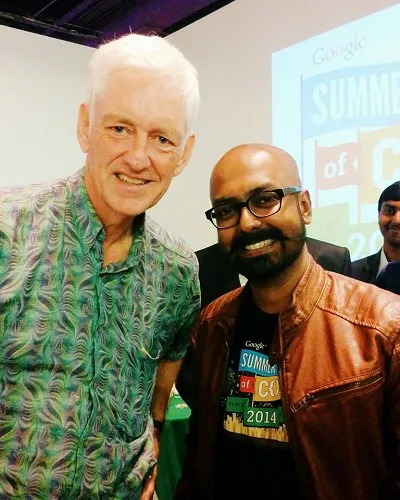
After graduating, BG applied to four startups across India, two of which (in Kolkata and Chennai)don’t exist anymore. BG was conflicted between the other two —Cleartrip (in Mumbai) and Slideshare(in Delhi). His love for and faith in Lisp made him choose Cleartrip. He says,
In India, there was only one product company where I could work on Lisp and get paid for it. It was then a no-brainer and I chose Cleartrip.
BG joined as a part of a small five-to-six-member team that built Cleartrip from scratch. Cleartrip was built on Common Lisp, application servers and database. BG says, “Airline booking is a very complicated system. Even today many airlines’ ticket booking systems are built on the top of mainframes. It uses very complex APIs and business logic. Using Lisp it’s possible to write domain-specific languages which would encapsulate complex business logic extremely simply.”
In a matter of few months, BG wrote the whole air ticket booking engine for Cleartrip. BG also worked on fare routes and fare prices. For example, air ticket prices change multiple times a day. These changes aren’t communicated via API, but in Excel sheets(emails from airlines). A developer would take a day to convert the rules into code and it would take another day to reflect, by which time the site would end up showing the wrong fare, resulting in losses. BG wrote a compiler and a domain-specific language for fare data which comes in Excel sheets. It allowed the business guys to upload the Excel file and it would compile, validate, and convert to code and deploy it.
Related read - Story of the Lisper from Gaya – Atif Haider
Book tickets at negative prices!
Common Lisp is a functional language but not purely functional language. In pure languages, the data structures can’t change; they are immutable. Once you've created the data structure like an array, you can't update it. You have to create a new version. The benefit of immutable data structure is that it removes the whole class of problems like inconsistent updates from your codes. Be thought he would write code in a pure way and not mutate any variables. He narrated an incident which was also one of the most important learning experiences at Cleartrip.
One day there was a bug in the system. I deployed some code to change something and went to sleep at 6 am. I got a call from the business team and they said the tickets were available in negative on the site. We had already sold 800 tickets for free, and lost Rs 10 lakh in two hours.
BG reverted the code and went to work on figuring out what was wrong, eventually realising that his pure code had somehow interacted with someone’s impure code, resulting in this problem. This fiasco taught him the value of immutable data structures.
After almost one and a half years at Cleartrip, BG figured that he wanted something else and decided to leave the company to start up.
Startup #1 — oCricket
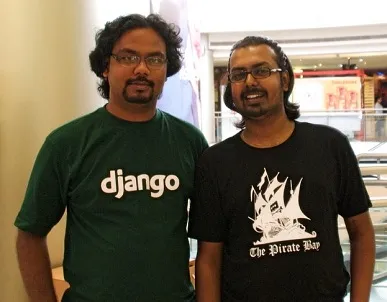
In July 2008, BG, worked(as a co-founder) on building oCricket, a platform which had features of today's Facebook, Cricinfo, and Medium, combined in one. The social networking website had data, scores, and allowed the fans to have discussions (via chat or sharing content). Founded by Brajeshwar Oinam,the company counts Harshad Sharma as its other co-founder.
In 2008, oCricket.com was one of the first few companies to use Amazon Web Services (AWS). The system was written in Python. After one year of operations, oCricket was seven-to-eight-members strong with almost 10,000 users and 500–600 daily active users. The company raised a small amount of money from an HNI investor to take care of salaries and hosting costs. BG feels he had built a good product but struggled because of monetisation and funding. He decided to move on.
From the oCricket journey, BG learnt the importance of product/market fit. He says,
We shouldn’t build products just because we can. There should be a market where people are ready to consume those products and pay for it. Otherwise, it's a long journey and needs much more resources.
Meanwhile, in his quest to learn new languages, BG had stepped into the then-new Clojure, a dialect of Lisp running on the Java virtual machine (JVM). Not many people were using it. BG soon realised that Clojure is the programming language of future. He had found his perfect language which had data structures and the power of Lisp and JVM. He used only Clojure for the backend and his became the third company in the world to use Clojure in the production(actual building of products by a company). Even today, the Helpshift team uses Clojure and is one of the largest Clojure teams in the world. According to BG, Clojure enables one to develop programs quickly and correctly.
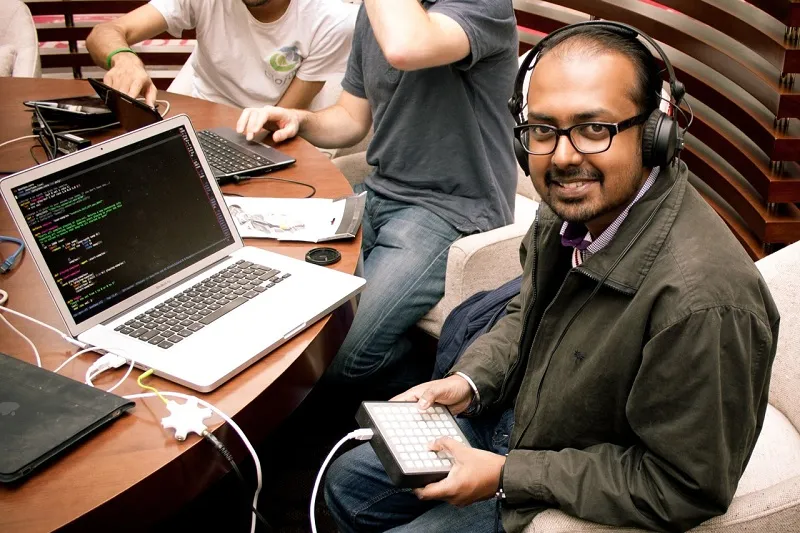
You may also like - As ‘cloud wars’ grow fiercer, who will rule the Indian market — AWS, Azure, or a wildcard?
Startup #2 — Paisa.com
In 2009, Freeman Murray, Founder of Jaaga, introduced BG to Abinash Tripathy, who had just left Yahoo and was looking for a technical co-founder to start up with. After talking to Abinash, BG decided to shut down oCricket and move the entire team to Pune (for the new startup). BG and Abinash started Infinitely Beta and launched its first offering, Paisa.com, a B2C consumer finance product (something like Google finance but built for the Indian market) in 2010. The company’s goal was to build a world-class product from India.
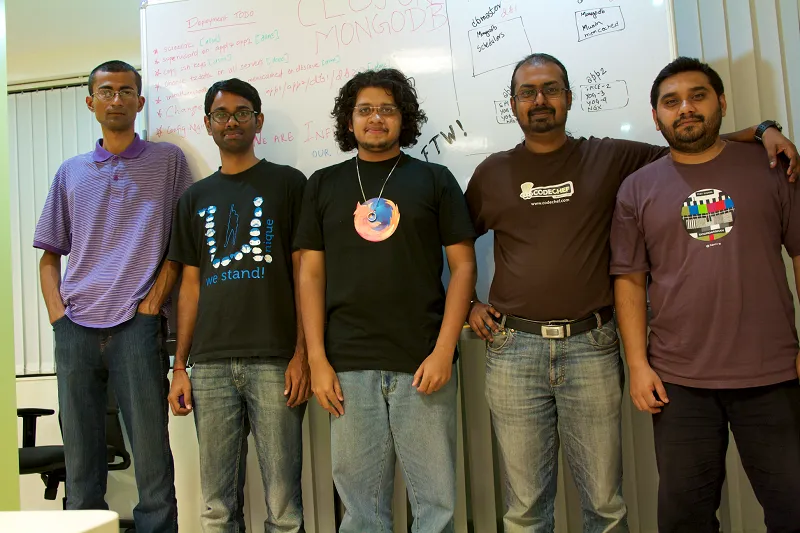
BG says, “We offered Amazon-like filtering for stocks (on Paisa.com) for the first time in the world.” The platform scaled to around 20,000 users and 2,000 DAUs but wasn't a global product. The startup struggled with monetisation and funding. BG also shared an incident which made him and Abinash take the decision to shut down Paisa.com.
The Paisa.com team built a tool that would import a user’s portfolio from the largest personal finance website in India (with his/her username and password). This website kept changing the technique to stop Paisa.com from scraping the data butBG’s team was quick enough to respond every time and fixed it quickly. Ultimately, BG decided to make the portfolio manager completely client-side, written in JavaScript. This couldn't have been blocked. Finally, they (the personal finance website) claimed a $4 million penalty from Paisa.com.
BG says, “It set us back. We realised it is no place for startups to compete with big players.”
Related read - Sandipan Chattopadhyay — the statistician behind the 160x growth of Justdial
Startup #3 —Helpshift— the story of 6 iterations
After Paisa.com, Abinash and BG started looking for something which had a larger market and scope for innovation. They thought CRM for B2B businesses had some really hard problems to solve and did not have a lot of competition from new startups as well. The product went through six iterations to reach the basics of what Helpshift is today. BG took us through these iterations and the reasons(or thought process) for the same:
- Quora was recently launched then. We started building Quora for enterprises because companies have so many questions and it’s important to curate these questions and answers (QnA)and make it available somewhere so that other employees can search through that and find their answers. It was a complete product (and not just prototype) but when we went to the investors, they weren't satisfied with theQnA platform; they wanted more stuff.
- We thought businesses care more about customers than internal QnA, so we built an enterprise QnA platform for customers (with moderation).
- Then we realised that knowledge base without action is useless, so we built a multi-channel CRM to get all the tickets and issues info from Facebook, Twitter, email and other places at one place. Customer service agents could respond to these and the responses would be sent through the appropriate (corresponding) channel.
- We started thinking about whether we could embed this experience for some other websites also. So we built a widget to do that.
- We realised that a lot of people have problems in using the website with the widget (integration). What if a customer service agent (CSA) helped the user understand it? So we went ahead and built a complete azure desktop solution using primitive technology. It was a co-browsing tool which allowed the CSA to share control of your website and guide them where to click and show them.
- When we spoke to customers and investors, they asked us about our USP. We also realised that building a CRM for the web is challenging, given the crowded market. We decided to make this product for mobile. We threw away everything and built from scratch, reimagining CRM from mobile.
The first cut of the mobile CRM was ready in three months and the startup raised a seed round in Silicon Valley. It was mostly built on Clojure with MongoDB and Python. Today, more than two billion people have Helpshift’s SDK installed. The system on which Helpshift runs is a massive distributed system.
For BG, scaling was the biggest challenge at Helpshift, and not just in terms of infrastructure. He says, “Scaling means having a large organisation, being able to do more. People don’t just come and scale, but they also need some scale before coming so we have to build infrastructure so that people can contribute.”
Helpshift was the market leader in the mobile games but had to overcome the challenge of scaling to different markets like e-commerce, personal finance, productivity, and other categories.
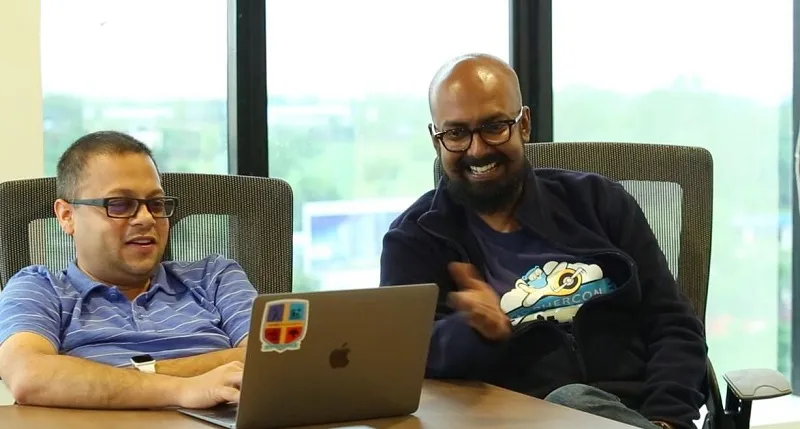
At Helpshift, the team is committed to solving next-level problems. BG believes that not many companies reach the level where Helpshift is. The company has raised more than $38 million in multiple rounds of funding and is 150 members strong. BG says,
But my job is not done yet. We are focusing a lot on artificial intelligence and machine learning (ML) and you’ll see something coming out from our side in a few months.
Hiring — the BG way
BG doesn’t care too much about experience unless someone is exceptional. He believes that one anyway has to learn things from scratch at a new job.According to BG, culture fit is more important for hiring while skills can be acquired. He explains, “In our (Helpshift’s) case, it refers to having some strong opinion about certain things and it’ll be tough for us to work with someone who doesn’t have an opinion on anything. Our culture is about learning, being patient, having perseverance, and attention to detail.”

BG considers himself conservative in terms of taking decisions, because of which almost all the major decisions taken by him in life have proven to be right so far. His biggest mistake was to believe technology can solve all the problems. He learnt eventually that tech is merely an enabler and not a solution. He says,
We (techies) somewhere take pride in being socially awkward. While it may be useful to an extent as you get some personal time, I feel that social relationships, understanding people, and being able to work with them are very important skills to have as a technologist. Having empathy for users is also very important.
From a techie to an amateur philosopher (and a farmer)
BG thinks of himself not as a techie but as an amateur philosopher. He believes meditation has helped him understand the holistic picture of the startup lifecycle. He says,
Nothing is permanent — whether good or bad, it’ll pass/change. Stand like a rock and don’t get affected.
Whether it’s a decision to make or a complex problem to solve, BG takes his own time and never reacts instantaneously. He explains, “Our foreground brain is powerful in gathering new information, taking tactical decisions, and in processing information fast while our background brain is better at solving problems and inferences. In order to activate our background brain, it’s important to sleep over a problem.”
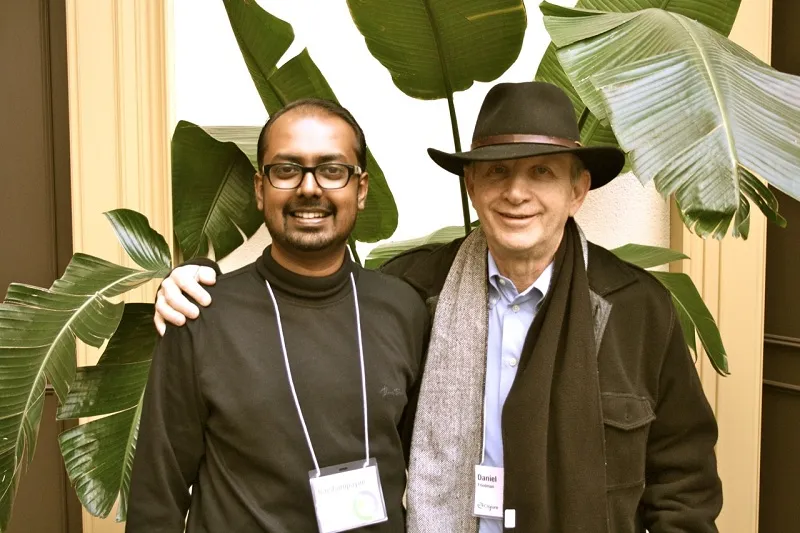
He further believes that whether it is programming or decision making, understanding fundamentals help a lot.
BG is clearly a very patient man. He believes that good guys always win. Humility is very important for him. His focus has been shifting away from programming to designing systems now. He has the distinction of being the only person to be invited to speak at all the global conferences of Go, Clojure, Ruby, Python.
BG has bought some land in Dehradun and plans to get into small-scale farming. He says,
I want to shift my focus away from making small impact to huge people, to making large impact on a small number of people.
BG wants to go back to the basics and see how he can apply his knowledge. He’ll be happy if the ideas he has talked about live on.
You can connect with BG on LinkedIn and Twitter.
Trivia - The Art of Computer Programming by Donald Knuth is considered to be the bible of computer science. Donald Knuth sends $2.56 check for each mistake pointed out in the book. During his college days, BG could figure out four mistakes for which he received a $10.24 check from Donald.
Update - The mention of oCricket's founder and other co-founder has been added in the copy.






![[Techie Tuesdays] Baishampayan Ghose — the Agartala boy who is all set to become a farmer after co-founding 3 startups](https://images.yourstory.com/cs/wordpress/2017/04/Baishampayan-Ghose-Helpshift-Techie-Tuesdays.jpg?mode=crop&crop=faces&ar=2:1?width=3840&q=75)
![[Funding alert] Wonderchef raises Rs 150 Cr led by Sixth Sense Ventures](https://images.yourstory.com/cs/2/b87effd06a6611e9ad333f8a4777438f/funding-1630344931171-1636700432294.png)

